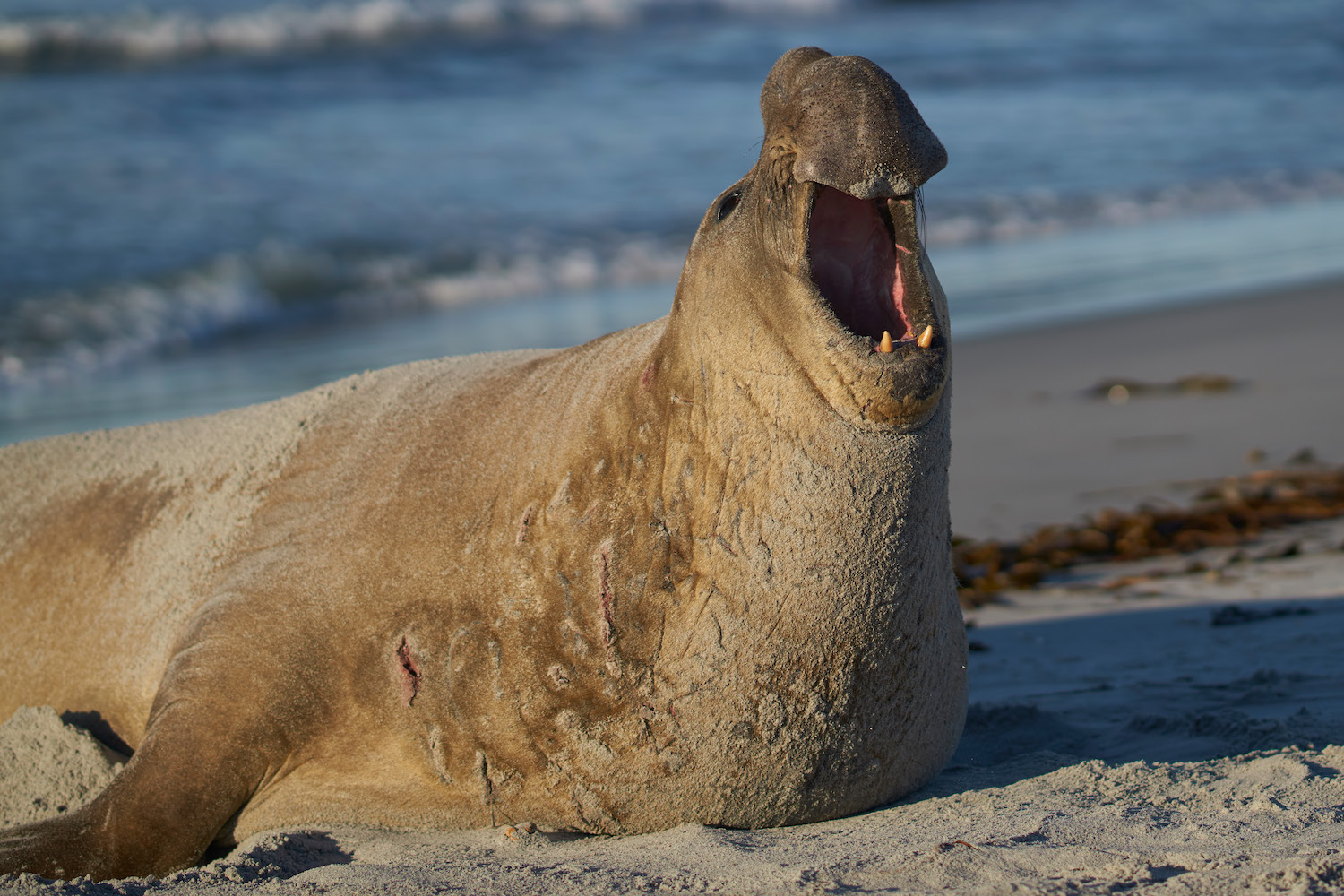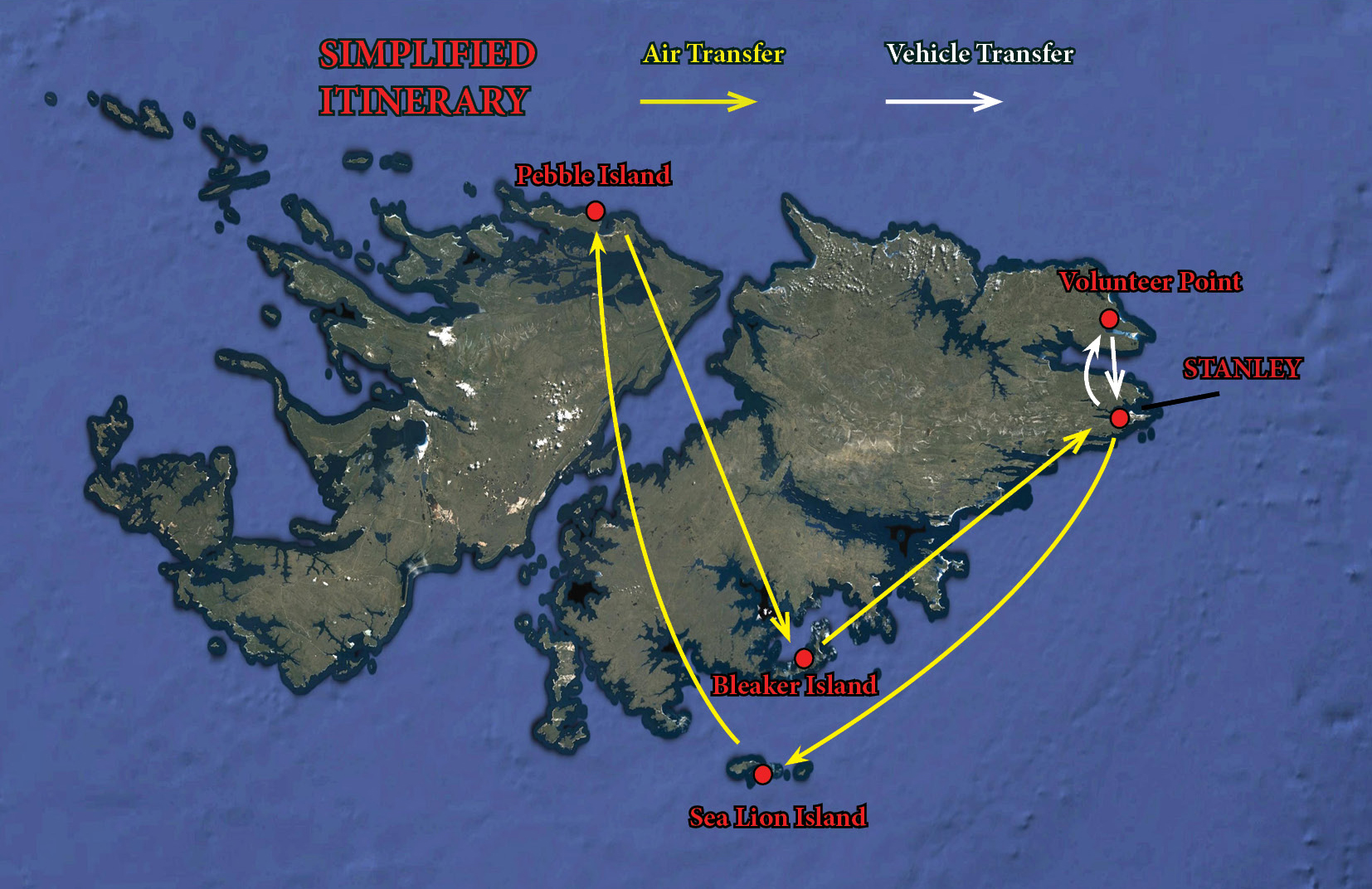Wildlife of the Falkland Islands
Key Facts
COST: We organise this expedition on a bespoke tour basis. We can set this itinerary up for private groups up to 10 people. The cost depends upon the group size. Please email for a quote.
START POINT: Stanley, Falkland Islands
END POINT: Stanley, Falkland Islands
DATES: To fit your preference. We recommend December – February, which are the best months for weather and wildlife.

Much of this wildlife can be seen very easily, not least, because many native marine mammal and seabird species are not habituated to mankind and so can be approached (carefully, quietly and at a responsible distance) to enable incredible photo opportunities and experiences!
This unique archipelago of nearly 800 islands harbours beautiful landscapes, fascinating history and friendly local culture. Many visitors leave agreeing that the Falkland Islands are among the world’s top “undiscovered” wildlife destinations.
This trip offers many of the very best wildlife highlights that the Falkland Islands have to offer, and in the greatest levels of comfort and ease possible. This trip has been specifically planned with naturalists and wildlife photographers in mind, allowing a few days at key wildlife islands, giving the opportunity to observe wildlife up close and personal, and really take time to absorb and appreciate the amazing species that call the Falkland Islands home! This trip has a gentle pace to really absorb and experience these extraordinary islands.
Getting there:The main way of reaching the Falkland Islands is by flight, see www.falklandislands.com/getting-here
LATAM: operates a flight every Saturday from Santiago, Chile (SCL) returning the same day. International Tours & Travel Ltd (see www.falklandislands.travel ) is the sales agent for these flights and handles bookings.
RAF Flights: the British Royal Air Force operates twice weekly flights from RAF Brize Norton (a military airport in Oxfordshire, England). Civilian passengers can book seats on these flights via the Falkland Islands Government Office in London, see www.falklands.gov.fk/londonoffice/contact-us
Itinerary
Extending your trip:
We can customise the following itinerary, or add additional island visits. Carcass Island is home to spectacular wildlife populations, and is well worth visiting. Tours from Stanley to Kidney Island (home to tens of thousands of sooty shearwaters, sea lions, fur seals and penguins) is also well worth a visit, and battlefield tours led by local historians to the key sites of the Falklands War offer a fascinating overview of the perspective from the Islanders. We can build in the above (and other activities) to expand the following to a three week itinerary.Day 1:
Arrive on LATAM Airlines flight from Santiago. You will be met on arrival at the airport and transferred by bus from Mount Pleasant Airport to Stanley (approx 1 hour transfer). Check in to Malvina House Hotel. After unpacking and relaxing, we recommend a walk around Stanley, to visit the whalebone arch, the Governor’s House and the fascinating Falkland Islands Museum. Accommodation and full board at Malvina House Hotel.Day 2:
Transfer to Stanley Airport for onward internal flight to Sea Lion Island for four nights’ accommodation on a full board basis. Highlights: One of the most southerly islands in the Falkland Archipelago, Sea Lion Island is operated solely for wildlife and wilderness tourism. It is the largest breeding site of southern elephant seals in the Falkland Islands, as well as South American sea lions, gentoo penguins, Magellanic penguins, rock hopper penguins and around 40 species of breeding birds. The island’s rodent-free status allows it to be a refuge for the endemic Cobb’s wren and tussac bird, as well as southern giant petrels and Falkland skua. Hunting killer whales are a frequent sight patrolling the waters offshore.Das 3 – 5:
We have three full days to explore Sea Lion Island. This is a good amount of time to really take in the wildlife of the island (with buffer time in case we are unlucky with weather). At the time of our visit, the penguins chicks will soon be starting to fledge. We have a very good opportunity to see a wide range of wildlife, and sufficient buffer time so that, if we are unlucky with the weather for a day or so, we still have enough time to see the key sights!Day 6:
Transfer to the Sea Lion Island airstrip for flight to Pebble Island for four nights’ accommodation on a full board basis. A drop off and pick up service has been arranged. Highlights: Pebble Island is a haven for wildlife, with a marshy wetland in the east (famed for its waterfowl and wading birds) and a hilly west (known for its penguins). Among the birdlife are: Falkland steamer ducks (100 breeding pairs), ruddy-headed geese (175 pairs), gentoo penguins (1,700 pairs), southern rockhopper penguins (6,800 pairs), macaroni penguins (10 pairs), southern giant petrels (20 pairs), sooty shearwaters (100 pairs), striated caracaras, white-bridled finches, blackish cinclodes and Cobb’s wrens. black-necked and Coscoroba swans breed on the main island! Commerson’s dolphin are a common sight in the waters around the island and the wreck of a downed Argentina fighter plane lies in the interior of the island from the Falklands War.Days 7-9:
Three full free days to explore Pebble Island.























